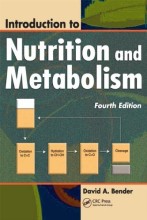Homeostasis and Behavior - Energy Balance - Metabolism during the Well-Fed State
4 important questions on Homeostasis and Behavior - Energy Balance - Metabolism during the Well-Fed State
What happens during the well-fed post-absorptive phase?
Insulin secretion rises and glucagon levels fall. Insulin stimulates the conversion from glucose to glycogen and also helps the transport of glucose to fat tissue and muscles and the transport of aminoacids to muscles. In the liver the amino acids are transformed to ketone bodies.
What are the two phases of metabolism in the well-fed stage?
postprandial phase and postabsorptive phase
What are the phases of insulin release?
- The cephalic phase: a neurally triggered releas of insulin from the pancreatic beta-cells ocurs as a result of the sensory stimuli associated with food intake.
- Gastrointestinal phaes: primary storage of excess nutrients taken in during a meal.
- Higher grades + faster learning
- Never study anything twice
- 100% sure, 100% understanding
What are the different tasks for insulin in postabsorptive phase?
In the liver insulin stimulates the conversion of glucose to glycogen (A stored form of sugar). Glycogen is stored in the liver and in muscle.
Insulin also facilitates transport of glucose into muscle and fat cells as well as the transport of amino acids into muscle cells.
In the liver amino acids are converted into ketone bodies
In peripheral cels, insulin is necessary for glucose oxidation and lipogenesis.
Insuline prevents breakdown of glucogen in borth muscle and liver cells and also mobilization of maetabolic fuels from adipose tissue.
The question on the page originate from the summary of the following study material:
- A unique study and practice tool
- Never study anything twice again
- Get the grades you hope for
- 100% sure, 100% understanding































